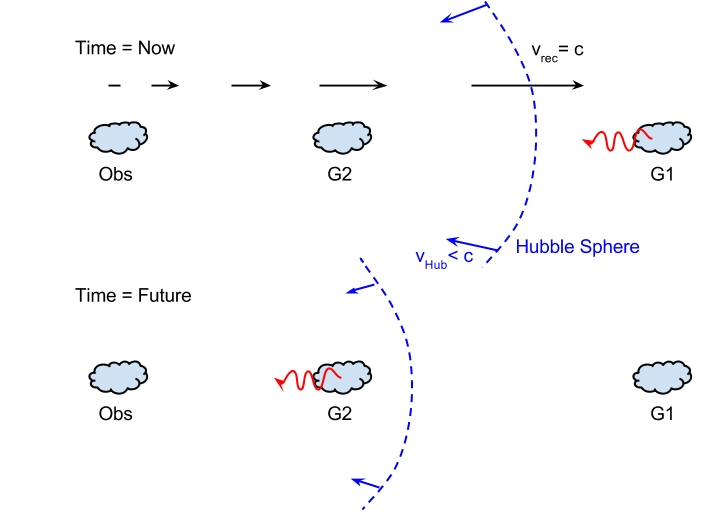The reference is Pulsar's answer, see detailed explanations and graphics.
@Christoph 's answer is correct, so it is just an other way to express the answer.
First, there is a notion of instantaneous proper distance (between us and some galaxy), where we may imagine that the expansion is stopped at time $t$, and that we measure the distance between us and the galaxy. This is a pseudo-distance, which is not really and practically measurable.
The Hubble distance is a proper distance corresponding to a recession velocity of $c$ at some time $t$. It depends only on characterics ($a(t)$, etc...) at the time $t$.
The difference between the cosmic event horizon proper distance (and also for the past light-cone proper distance) , compared to the Hubble distance (see in the reference the expressions of $D_\text{H}(t_{ob}),D_\text{lc}(t_\text{em},t_\text{ob}) ,D_\text{eh}(t_0$) for details), is that, for the cosmic event horizon proper distance and the past light cone distance, there is a physical signal (a photon). So there is an integration on different $a(t)$, this corresponds to the fact, that, while the photon itself has always a speed of $c$, in a local frame, the real distance between, for instance, $2$ intermediate galaxies on his travel, is increasing, due to the expansion of the universe. So we have to take in account all the values of $a(t)$ from the time where the photon is emitted until the time where the photon is observed.
The other fact is that it is exact that the Hubble distance lies completely inside the event horizon. The relation between the $2$ depends on the expression of the Hubble parameter $H(a(t))$, between $t$ and $+\infty$


